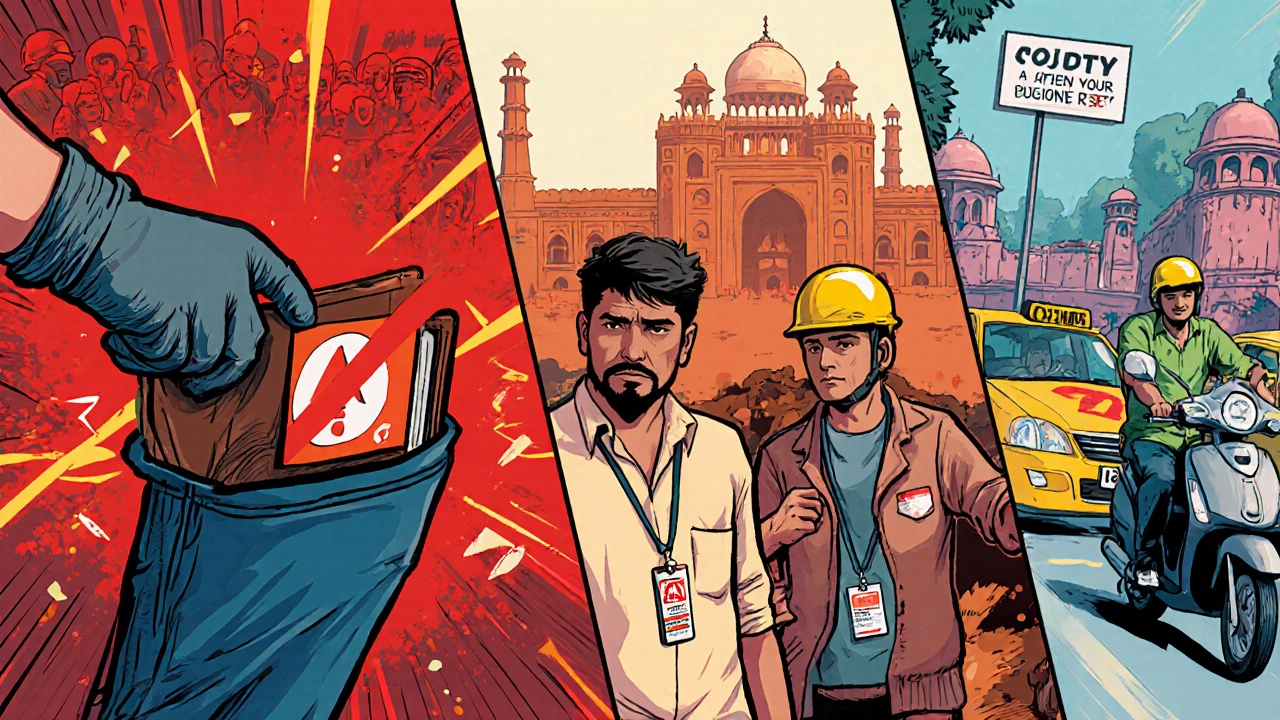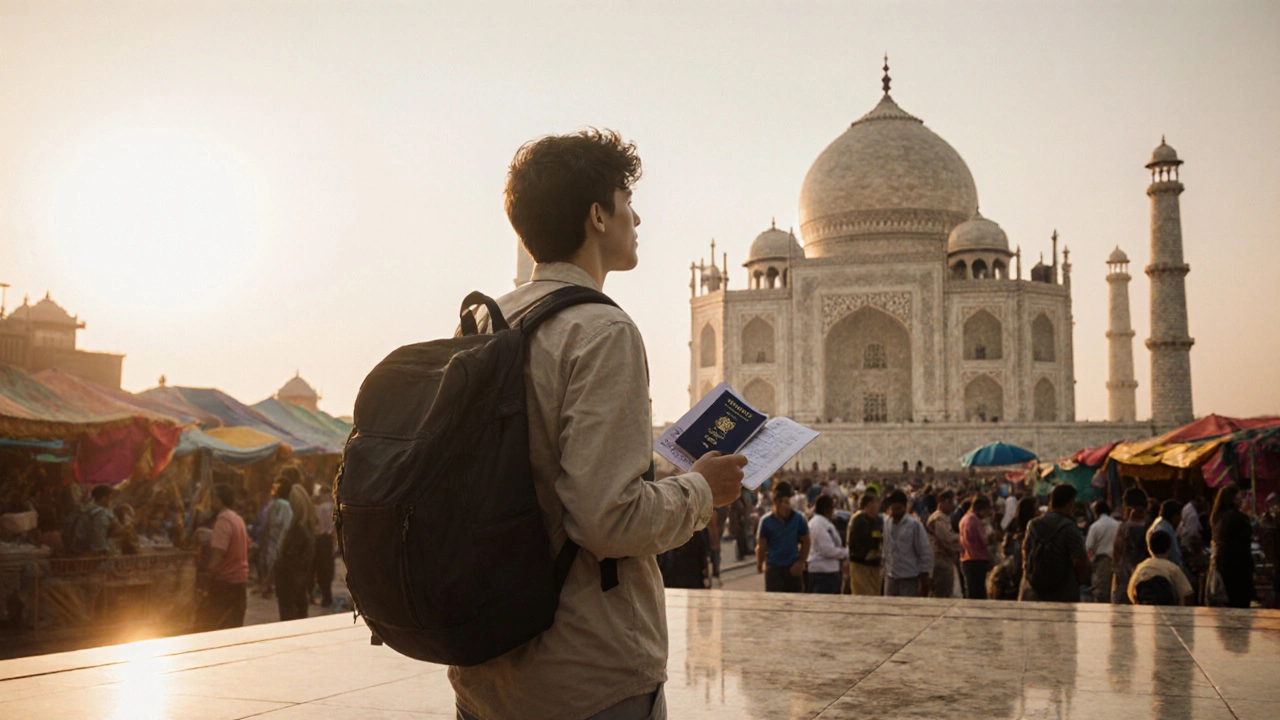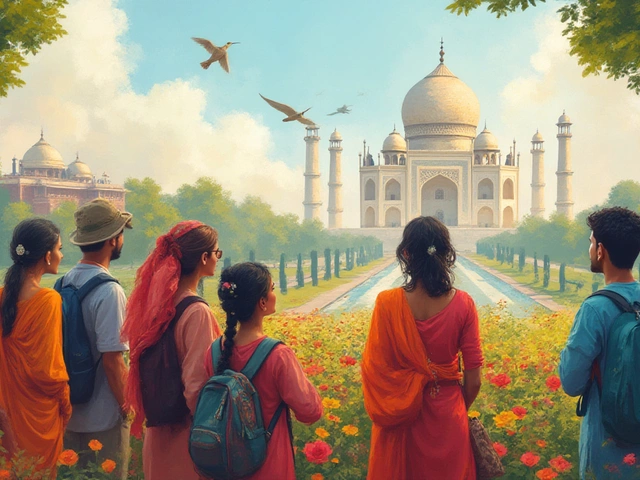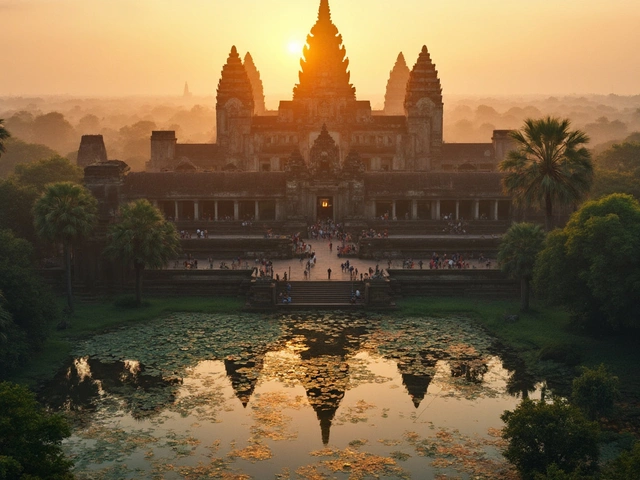India Safety Risk Calculator
When you picture India is a vast South Asian country famous for its culture, food, and history. But tourist safety in India often tops the checklist before booking a trip. This guide breaks down the real safety picture, highlights the most common concerns, and gives you actionable steps so you can enjoy the journey without constant worry.
Understanding the Safety Landscape
India’s safety record is a mix of impressive progress and lingering challenges. The National Crime Records Bureau reported a 12% drop in violent crime against foreigners between 2022 and 2024, while petty theft remains the most frequent issue in crowded hubs. The risk profile differs widely between regions, so a blanket statement won’t do.
Key Safety Concerns for Visitors
- Petty theft and pickpocketing: Happens most in train stations, market streets, and popular monuments.
- Scams targeting tourists: Fake guide offers, unlicensed taxi rides, and overpriced souvenir shops.
- Road safety: Chaotic traffic, especially in megacities like Delhi, where lane discipline is loose.
- Health risks: Seasonal heat, waterborne illnesses, and occasional outbreaks of diseases such as dengue.
- Women’s safety: While many solo female travelers report positive experiences, it’s wise to stay in well‑reviewed accommodations and avoid isolated areas after dark.
Regional Safety Snapshot - Focus on North India
The north of the country draws most first‑time visitors because of iconic sites like the Taj Mahal, Himalayan treks, and vibrant festivals. Here’s a quick look at safety across key states and territories:
| Region | Crime Index (Lower = Safer) | Common Issues | Travel Advisory Level |
|---|---|---|---|
| Delhi | 37 | Pickpocketing, traffic accidents | Medium |
| Rajasthan | 31 | Scams, camel‑ride mishaps | Low |
| Uttarakhand | 28 | Road landslides (monsoon), wildlife encounters | Low |
| Himachal Pradesh | 26 | Adventure‑sport injuries, narrow mountain roads | Low |
| Leh‑Ladakh | 25 | Altitude sickness, remote‑area medical access | Low |
Numbers come from the 2025 Global Peace Index and local police reports. As you can see, many northern spots rank below the national average, but every traveler should stay alert.

Practical Safety Tips Every Tourist Should Follow
- Get travel insurance that covers medical evacuation. Look for policies that mention “repatriation” and “adventure activities” if you plan trekking.
- Carry a copy of your passport, visa, and emergency contacts separate from the originals.
- Use only registered Police or reputable ride‑hailing apps for transport.
- Avoid displaying expensive jewelry or gadgets in crowded markets.
- Stay hydrated, but drink only bottled or filtered water; check the seal before opening.
- Check the latest COVID-19 and vaccination requirements; a standard two‑dose regimen plus a booster is accepted by most hotels.
- Learn a few basic Hindi phrases such as “Help” (madad) and “Police” (police) - they can be lifesavers.
- When booking tours, verify that the operator has a valid license from the state tourism department.
Dealing with Common Scams
Scams thrive in high‑traffic zones. Here are the most frequent tricks and how to dodge them:
- Fake guide at monuments: Genuine guides wear an ID badge from the Archaeological Survey of India. If a guide approaches you unsolicited, ask to see the badge before agreeing.
- Unlicensed taxis: In Delhi and Jaipur, only registered yellow taxis or app‑based cars display a license plate and driver photo. Insist on a receipt.
- Currency exchange on the street: Always exchange money at banks or authorized counters. Street traders often give you lower rates and counterfeit notes.
Health Precautions
Medical infrastructure in large cities like Delhi or Chandigarh is world‑class, but remote hill stations may have limited facilities. Carry a basic first‑aid kit with band‑aids, antiseptic wipes, and any personal medication. If you plan high‑altitude trekking in Leh‑Ladakh, a prescription for acetazolamide can prevent altitude sickness.

Women Travelers: Extra Tips
Many solo women report wonderful experiences across India, but a few extra steps can boost confidence:
- Book women‑only dorms in hostels or request a female‑friendly floor in hotels.
- Share your itinerary with a trusted friend and check in daily.
- Avoid walking alone in poorly lit areas after sunset, especially in smaller towns.
- Carry a small personal alarm or pepper spray where legal.
Emergency Resources
In an emergency, dial 112 - the nationwide emergency number for police, ambulance, and fire services. Most major cities also have a dedicated tourist helpline (e.g., Delhi’s 011‑2337‑6500). Keep the contact details of your country’s embassy; the Indian Ministry of External Affairs website lists updated embassy locations.
Final Thoughts: Is India Safe for Tourists?
Safety in India, especially in the north, is comparable to many popular destinations worldwide. The key is preparation: research, sensible precautions, and staying aware of your surroundings. By following the tips above, you can focus on the breathtaking architecture, vibrant festivals, and warm hospitality that make the country unforgettable.
Do I need a visa to travel to India as a tourist?
Most nationalities can obtain an e‑tourist visa online. The process takes 2-4 business days and is valid for 60 days with double‑entry. Some countries qualify for Visa‑on‑Arrival at major airports.
Is it safe to travel alone as a woman in North India?
Yes, with the right precautions. Stick to reputable accommodations, use registered transport, and avoid isolated streets after dark. Many solo female travelers report positive experiences in cities like Delhi, Jaipur, and Shimla.
What health vaccinations are recommended before visiting India?
The CDC recommends Hepatitis A, Typhoid, Tetanus‑Diphtheria, and routine vaccines. For certain regions, especially the Himalayas, a COVID‑19 booster and, if you’ll be in rural areas, a Japanese Encephalitis shot are advised.
How can I avoid pickpocketing in crowded places?
Keep wallets in front pockets, use anti‑theft backpacks, and stay alert to your surroundings. If a crowd pushes you, tighten your grip on bags and move to a less dense area.
What should I do if I lose my passport in India?
Report the loss immediately to the nearest police station and obtain a FIR (First Information Report). Then contact your embassy for a temporary passport. Most embassies can issue an emergency travel document within 24‑48 hours.


